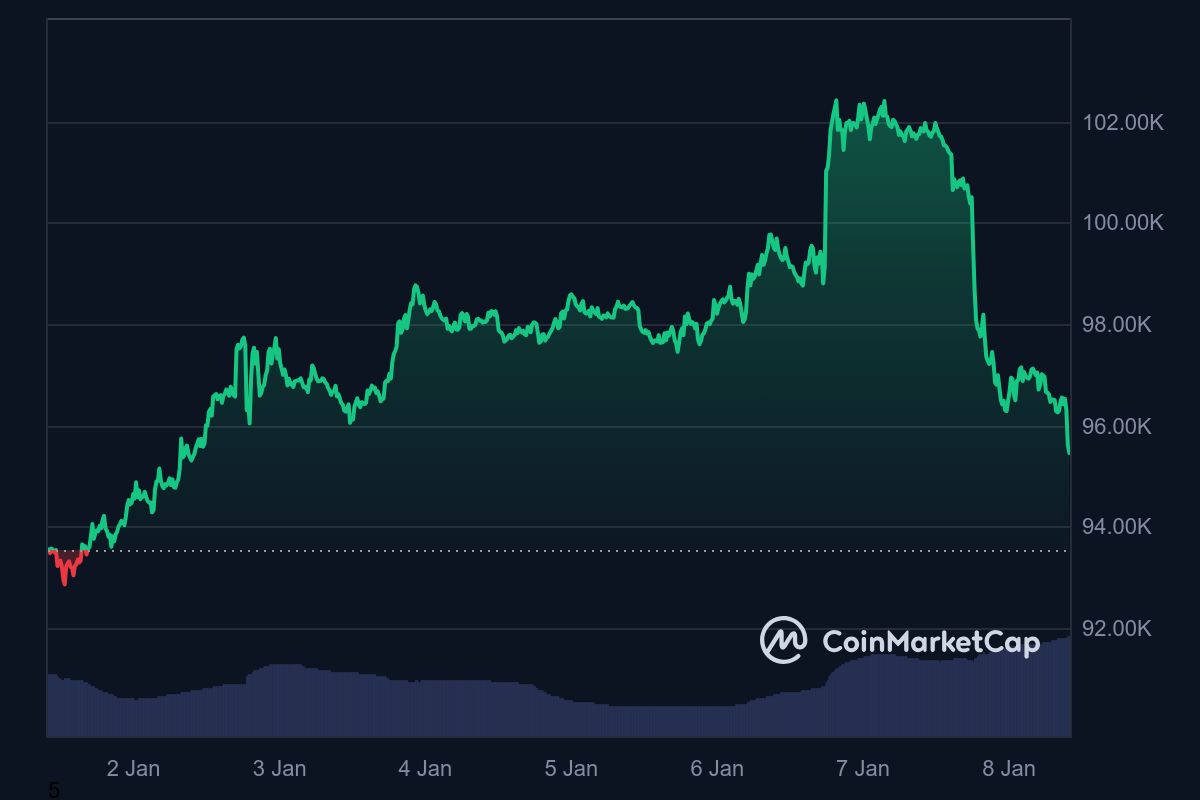Recent robust employment data from the United States has triggered a wave of selling in the cryptocurrency markets. Bitcoin (BTC)  $95,275 fell to the support level of $95,000 as rising long-term bond yields prompted investors to move away from risky assets. The U.S. Department of Labor’s JOLTS job openings report showed 8.1 million openings, exceeding the anticipated 7.74 million.
$95,275 fell to the support level of $95,000 as rising long-term bond yields prompted investors to move away from risky assets. The U.S. Department of Labor’s JOLTS job openings report showed 8.1 million openings, exceeding the anticipated 7.74 million.
Bitcoin’s Price Plunge Shakes the Market
The abrupt decline in Bitcoin’s price led to the liquidation of approximately $206 million in positions within just one hour. This selling pressure was not confined to the cryptocurrency market; stock indices like Nasdaq and S&P 500 also exhibited weakness. Nasdaq fell to 21,200, while S&P 500 dropped to 5,900.

There was also a significant decline in inflows into spot Bitcoin ETFs, which investors closely monitor. Total inflows plummeted from $987 million to $52.9 million, representing a 94% drop. However, the spot Bitcoin ETF from the world’s largest asset management company, BlackRock, stood out with a remarkable inflow of $596.11 million. In contrast, ARK and 21Shares’ ARKB fund saw a total outflow of $212.55 million.
Eyes Now on FOMC Minutes and NFP Data
Currently, investors are focused on the upcoming release of the previous Federal Open Market Committee (FOMC) meeting minutes and Non-Farm Payroll (NFP) data. These reports are expected to be pivotal in influencing the price movements of Bitcoin and the broader cryptocurrency market.
Experts believe that the current pullback is temporary and anticipate a market recovery in the short term. Notably, Donald Trump’s inauguration is expected to create a new wave of optimism in the market.
The current state of Bitcoin is seen merely as a reflection of market volatility. However, significant upcoming economic data and political developments are likely to shape the trajectory of the cryptocurrency market.
Disclaimer: The information contained in this article does not constitute investment advice. Investors should be aware that cryptocurrencies carry high volatility and therefore risk, and should conduct their own research.











